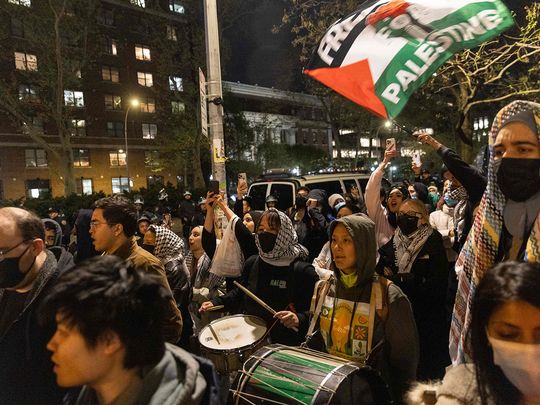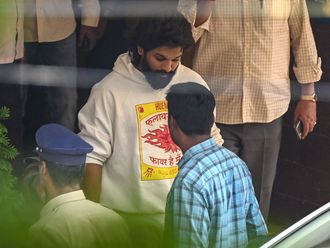
Since I was active in the Vietnam anti-war movement in the late 1960s and early 1970s, it may not seem surprising that news — not to mention striking images — of the pro-Palestinian student protests on campuses across the US represent for me, old geezer that I now am, not only a nostalgia for the absolutes of yore but also a time of reflection on the dynamic and relevance of student protests in social life.
The round-the-clock tent encampments erected by students on quads and lawns at dozens of campuses across the country, all the way from Northeastern University in Boston to Arizona State University in Tempe, 2,500 miles away, are now a common sight — and headline news.
Psychodynamic of this phenomenon
These nationwide demonstrations, held by students to express their opposition to Israel’s genocidal war in Gaza, seem to have come out of left field soon after April 18 — all erupting, to everyone’s surprise, seemingly simultaneously and as if in lockstep, though there clearly was no steady hand at the helm directing them by any central body of student leaders.
If you have wondered, as I have, how to explain the psychodynamic of this phenomenon, Omar Wasan, professor at UC-Berkeley, who studies protest movements, has an answer. He was quoted in the New York Times on Sunday as saying that how protest movements spread is anchored in what is known in sociology as the “ovation model”.
In a theatre, he theorised, “if some people in the front start to stand up”, to give a standing ovation, then other people start to stand up too, followed by a cascade throughout the auditorium.
Metaphoric ovation
Well, we know that in this case the academic ovation was started by Columbia University, which was, as it were, the first academic institution in the front of the auditorium to stand up on that day in April.
And, I tell you, everything about this Ivy League university — which traditionally has required its students to encounter what it calls “cornerstone ideas and theories from across literature, philosophy, history, science and the arts” — makes it the most likely place for that metaphoric ovation to begin.
You see, Columbia has a storied history in protest folklore, a history that an old geezer like myself with a good memory can recall vividly.
Take 1968, a hinge year in American political culture when protests against the war in Vietnam had snowballed through campuses coast to coast — even after President Johnson, who drove that war, had just told the American people that he “would not seek nor accept the nomination” of his party for a second year in office.
But it was at Columbia where, as we say, all the action was. And no incident was so evocative of the intensity of that action than the complete takeover by students of the university in April that year, when close to a thousand students, united in opposition to their school’s involvement in weapons research, occupied the campus and put out a banner on the ledge of Mathematics Hall — declaring it a “liberated zone” — then stormed Hamilton Hall, home to the university’s administrative offices.
Columbia’s DNA
Those of us who lived through those turbulent times (we then called them “groovey”) still recall the image of that one student, poetry major David Shapiro, sitting in President Grayson Kirk’s office, wearing sunglasses and holding, in the corner of his mouth, an unlit cigar he had found in the president’s desk, affecting a pose of insouciance.
It was an image that embodied not just the rebellious spirit encoded in Columbia’s DNA but the very ethos of 1968, its vivid colours, its primal sounds of protest and, yes, its Dadaist absurdities -- an avant-garde art movement of the early 20th century.
That was 1968, or if you wish, as called the era, the “Sixties”, and I tell you that no string of words can recapture the inner excitement and the passionate adventure of spirit unleashed by the student anti-war movement at the time, one that Columbia helped, single-handedly, to unleash across the country.
Look, you and I know that the idealistic dreams of those students were not realised then, have not been realised since and will not likely ever be realised in the America of our time. But there are some defeats that are as important as victories.
Just as, say, the Paris Commune of 1871 — crushed in blood after barely seventy days — has lived on in historical and popular memory, the student uprisings in 1968 still represent a hope that, even if students’ dreams (for human rights, racial justice, social equity and a moral foreign policy) were not fulfilled, what they did was worth doing. Its memory would go on to teach and inspire.
That is what happened in April 1968, almost exactly 56 years ago to the day, has bequeathed this new generation of students. It’s a legacy they are in the midst of replicating on their campuses across the country, however harsh police crackdowns on them will become.
I say all the power to you, kids, rock on.
— Fawaz Turki is a noted academic, journalist and author based in Washington DC. He is the author of The Disinherited: Journal of a Palestinian Exile











